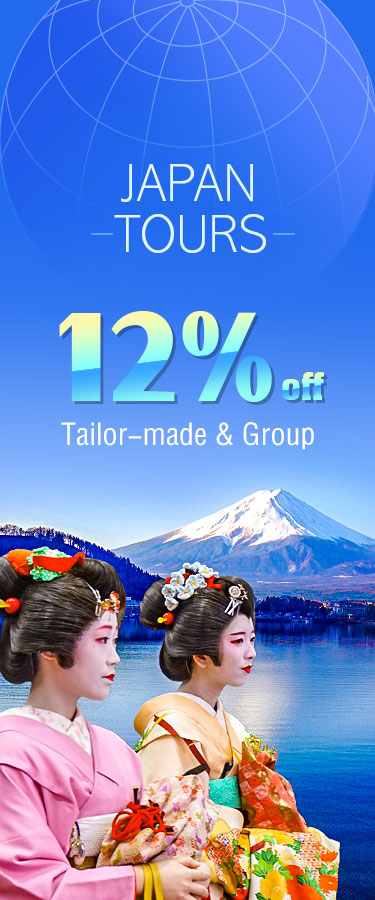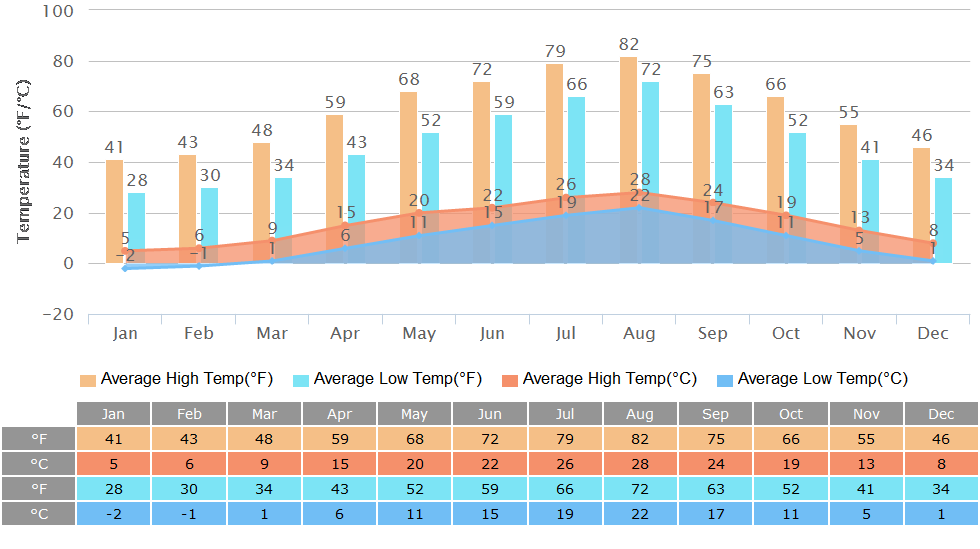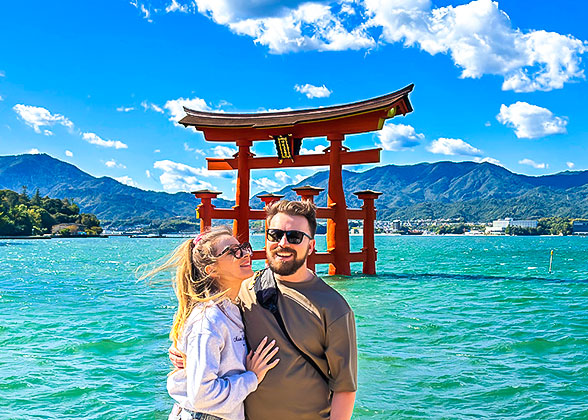Sendai Weather
Sendai, located in the northeastern region of Honshu, Japan, has the characteristics of both temperate oceanic climate and subtropical monsoon climate, with distinct four seasons: summer from June to August is very humid and rainy with rare heat; winter from December to February is cold with low precipitation, but the air is comfortably humid influenced by the ocean; spring from March to May and autumn from September to November both experience a pleasant climate.Temperature
Sendai weather is relatively mild compared to other northeastern cities in Japan, with not large year-round temperature difference. The average annual temperature ranges from -2 to 28 degrees Celsius (28.4-82.4 degrees Fahrenheit), with the daily temperature fluctuation of approximately 7-9°C (44.6-48.2℉). Summer temperatures rarely exceed 35°C (95℉), while winter daytime temperatures are often above 0°C (32℉), with nights generally freezing. In spring and autumn, temperatures during the day generally fluctuate between 10°C (50℉) and 25°C (77℉), but in early mornings and after dusk, the perceived temperatures drop noticeably.August is hottest month of the year in Sendai, but it’s within an acceptable range. The maximum temperatures are generally at 26-33°C (78.8-91.4℉), with the highest ever recorded being almost 37°C, however, under normal circumstances, even temperatures exceeding 35°C (95℉) are rare cases. The minimum temperatures are above 20°C (68℉) in general.
January is the coldest month in Sendai. Daytime temperatures are usually around 4-8°C (39.2-46.4℉), with the highest of no more than 12°C (53.6℉). In evenings, the temperatures usually drop below freezing point; during the coldest night, the temperature can be as low as -4°C (24.8℉).
Precipitation & Humidity
Average annual precipitation: approximately 1,255mmSendai’s precipitation is characterized by distinct seasonality, with higher precipitation from summer to mid-autumn, during which there are at least 13 rainy days per month. Winter has the lowest precipitation. The rainy season typically is from mid-June to mid-July.
Humidity in Sendai is never low throughout the year, with moderate levels primarily in spring and winter and high levels mainly in summer and autumn.
![]() Does it snow a lot in Sendai?
Does it snow a lot in Sendai?
Yes, it snows a lot in Sendai in winter months, especially in January and February when there are about 7-9 snowy days monthly; there may also be a few snowfalls in March. According to previous years’ records, the first snow usually occurs in late November or early December. However, with the influence of global warming, the first snow tends to come later, and usually manifests as small-scale drifting snow.
Does Sendai Get Typhoons?
While Sendai’s typhoon season runs from late July to September, the likelihood of a direct typhoon threat is relatively low. However, during typhoon season, the weather is likely to be unstable, with thunderstorms prone to occur.
What Is the Best Time to Visit Sendai?
If you enjoy vibrant natural scenery, the best times to visit Sendai are April to May, when the weather warms and flowers bloom, and September to November, when it’s comfortably cool and the autumn leaves paint Sendai in warm hues of red, orange, and yellow. If you’re looking for stunning snowscapes, January and February are the best time to visit. Additionally, the best time for a cultural experience is in the Tanabata Festival in early August.Read more about Best Time to Visit Japan & Japan Weather
Sendai Climate - Seasons & Travel Advice
Spring: March to May
Early spring in March can be slightly chilly, with daytime temperatures around 5-10°C (41-50℉) mostly. Starting from April, the weather begins to warm up significantly, with temperatures ranging from 10-16°C (50-60.8℉) during the day. In May, it is particularly warm at around 20°C (68℉). However, it’s important to note that the temperature difference between day and night in spring is obvious, and nights are generally still a bit chilly. Precipitation is not high in spring, instead, you are likely to enjoy sunny days.
In March, it is recommended to wear a long coat or a light down jacket with a long-sleeved sweater underneath; in April and May, you can change to a thin jacket or hoodie as the outwear; as for the lower body, thick sweatpants and warm shoes are suitable for early spring, and casual trousers or a windproof skirt together with casual shoes for late spring.
Spring boasts stunning scenery and a vibrant array of flowers, making it a perfect time for outdoor activities. Early to mid-April is particularly popular for cherry blossom viewing. Areas like Nishi Park, Tsutsujigaoka Park, and along along the Hirose River are ideal spots. In late April, you can also take photos with the vibrant tulips at Michinoku Lakeside National Government Park .

Sendai Sakura in Spring
|
Summer: June to August
Although summer is generally hot, but there are scarce extremely high temperatures. During the daytime, the temperatures generally remain at 21-33°C (69.8-91.4℉). Compared to other major Japanese cities, Sendai is known as the “city with cool summer”. Regarding precipitation, rainfall is quite frequent, especially during the rainy season, and there are more than half of each summer month with rain.
It’s ideal to wear breathable and light short-sleeved T-shirts, shorts or light skirts, paired with breathable casual shoes or sandals; the temperature will drop slightly at night, so it is recommended to bring a light jacket to cope with the coolness.
1. You’d better make alternatives of your itinerary based on the weather condition. For example, if it rains or you want to escape from the hot sunny noon, you can visit some indoor attractions like the Sendai City Museum, Miyagi Museum of Art, Sendai Uminomori Aquarium, etc.; you can also go to Sendai Asaichi Market, where there are many restaurants with delicious foods.
2. The Sendai Tanabata Festival, held in early August each year, is a renowned traditional festival during which you’ll see gorgeous Tanabata decorations hung throughout the city’s commercial streets, and enjoy a variety of activities, including fireworks displays, taiko drum performances, and food stalls. In addition, scenic spots such as Zuihoden and the Aoba Castle are illuminated at night.

Landscape of Sendai in Summer
|
Autumn: September to November
September still retains some of the summer temperatures, yet most of the time, daytime temperatures are around a comfortable 23-25°C (73.4-77℉); precipitation, though somewhat high this month, distributes over just 13 days on average, a moderate level. From October to November, the weather becomes noticeably cooler and cooler, with daytime temperatures mostly below 20°C and dropping to around 5-11°C (41-51.8℉) at night; fortunately, however, sunny days become more frequent.
In September, a long-sleeved shirt together with light trousers are suitable most time, however, you’d better add a light jacket for mornings and evenings and rainy days. In October to mid-November, you can wear a drench coat outside the inner layer such as a light sweater; in terms of lower body, either sweatpants or a knitted skirt will do; besides, it is safer to bring a vest and long johns to cope with plummeting temperatures.
From late September to November, Sendai’s autumn viewing season is in full swing. You can admire the beautiful autumn foliage in places like the Akiu and Mastushima. These scenic spots are also perfect for pairing with a stay at a hot spring resort after long walk in chilly winds.
Winter: December to February
Sendai is cold overall in winter. In December, daytime temperatures generally range from 3-9°C (37.4-48.2℉), while in January and February they range from 1-6°C (33.8-42.8℉). Nighttime temperatures in winter are usually below 4°C (39.2℉), with temperatures below freezing point being more common in January and February. Rainfall is very low throughout the winter, but snowfall is relatively frequent.
A long down coat or thick wool coat, with a turtleneck sweater inside are suitable for the upper. You can wear a pair of thermal underwear under thick wool pants on the lower body. Besides, hat, scarf and gloves are necessary.
1. The highlight of winter is the Sendai Pageant of Lights in December, when the zelkova trees lining Jozenji Street are festooned with colorful lights, creating a romantic winter scene.
2. Also, if you want to try winter sports in your 2025 trip in Sendai, you may go to the Spring Valley Izumikogen Ski Resort or Miyagi Zao Ski Resort where there are complete skiing facilities that give you a thrilling experience.

Snow-covered Sendai
|







